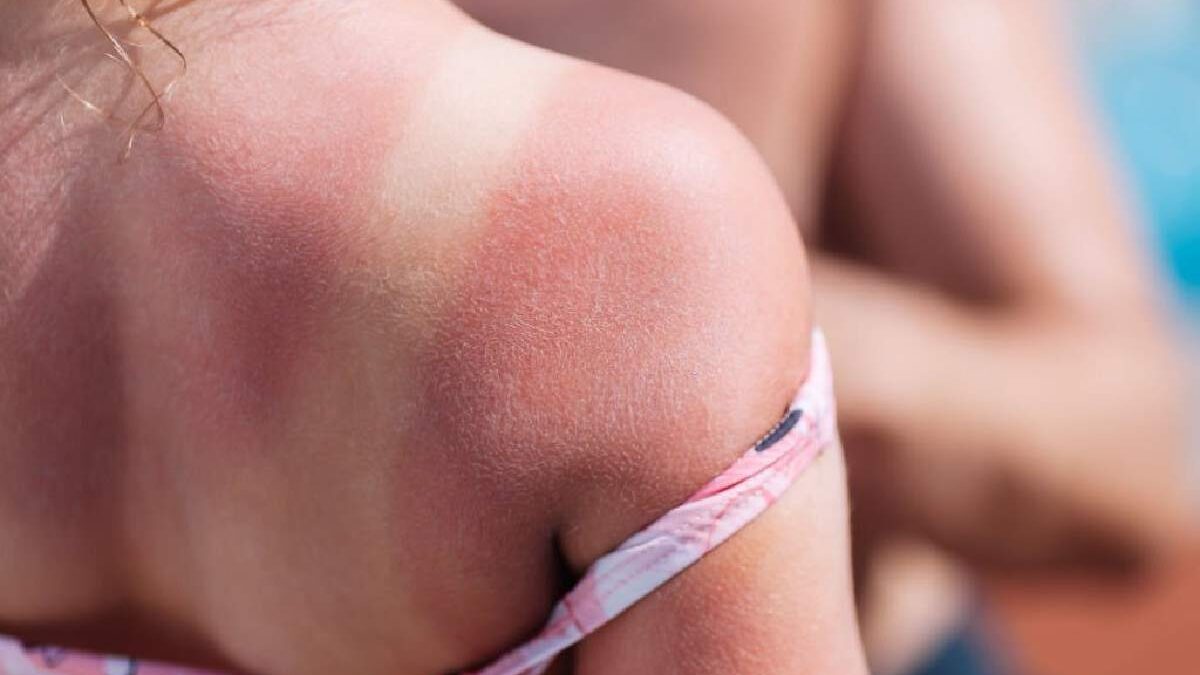SUN DAMAGE – Sun exposure without sun protection is the leading cause of premature ageing of the skin. This post will discover sun damage and how it affects the skin. Ways and assets to prevent and reduce it.
UVA AND UVB RADIATION
Ultraviolet radiation is part of the spectrum of light that reaches the earth from the sun. There are different wavelengths shorter than visible light. They are classified into Ultraviolet Radiation A (UVA) and Ultraviolet Radiation B (UVB). Both types of radiation damage and affect the skin. UVB (burnt) are responsible for burns on our skin or redness; UVAs penetrate deeper and damage DNA.
CONSEQUENCES OF SUN DAMAGE.
Sun damage has long and short-term consequences. An immediate sign of sun damage is sunburn. The skin often feels hot and inflamed and appears red. In severe cases, blisters, dizziness and nausea may occur.
In the long term, its consequences include a dry, dull, uneven skin tone. The sun tends to dry out the skin and reduces the levels of fatty acids in our skin, leaving a rough, flaking appearance. That is why the use of aftersun is essential during the seasons of sun exposure.
In addition, sun damage slows down the rate of cell renewal; this sources an accrual of dead cells on the skin’s surface, leading to congested, dull skin.
One of the most apparent and long-lasting signs is spots due to sun exposure.
The spots occur because ultraviolet light triggers excess melanin production in the skin. Excess melanin can be produced unevenly and is concentrated in smaller areas, causing jams. Dark spots require skin-matching ingredients to fade hyperpigmentation and help the skin return to its natural color.
Sun damage can also destroy collagen and elastin in the skin. Collagen is a protein that maintains the skin’s firmness, and elastin is the supporting fibre that allows the skin to recover. Collagen and elastin degradation occurs in the deeper layers of the skin, leading to premature ageing, such as wrinkles and fine lines. In addition, sun exposure also decreases the skin’s hyaluronic acid content.
In principle, sun damage has cosmetic effects, but it can become a health problem when it causes skin cancer. Repeated burns and sun exposure without sun protection increase the possibility of various skin cancers.
PROTECT YOUR SKIN FROM THE SUN.
Prevention is best, so be sure to guard your skin against the sun’s rays every day. It is not ever too initial or too late to start using SPF. The older you get, the more challenging it is for your skin to repair the effects of sun damage. An SPF should be applied in the morning and reapplied. In summer, the ideal is to replace it every 2 hours or after bathing and sweating, and in winter, the plan is to repeat it at mid-morning again.
Also, remember that some medications can make your skin more sensitive to the sun.
REDUCE VISIBLE SUN DAMAGE.
Although it is impossible to repair it, with the right products completely, visible improvements are visible.
- AHA exfoliant exfoliates the skin’s surface, helping to treat blemishes. We will also improve the texture of the skin and its luminosity.
- Retinol is in charge of promoting cell renewal naturally. Reduces wrinkles and skin spots caused by solar radiation.
- Vitamin C reduces dark spots, helps brighten the skin, and fights the free radicals produced by solar radiation and environmental pollution. He is super active.
- Antioxidant serums there are many serums on the market with antioxidant power that protect the skin against environmental damage and increase the effectiveness of sunscreens.
- Depigmenting treatments, used once a day or morning and night according to what is prescribed in the dermoadvice, have shown that they reduce dark spots and discolourations.

